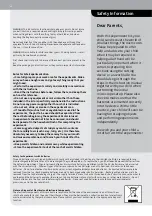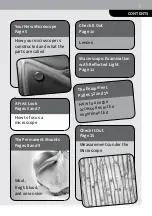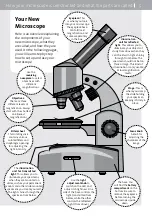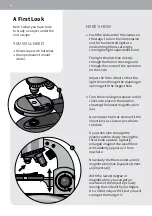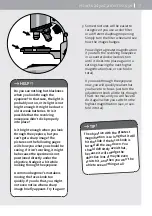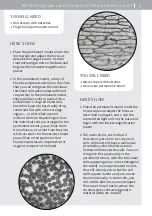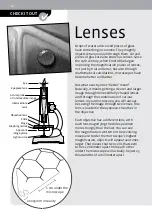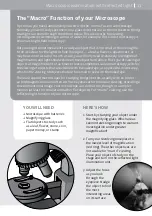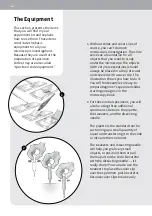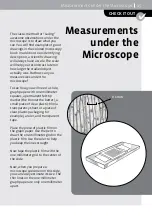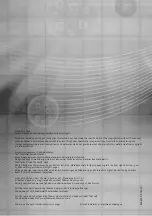
All the things you can discover with the permanent mount
9
HERE’S HOW
1. Place the permanent mount under the
microscope and adjust the focus as
described on pages 6 and 7. Use the
transmitted light unit on the base and
begin with the lowest magnification
power.
2. In this permanent mount, a drop of
blood was spread so thinly on the slide
that you can recognize the individual
red blood cells (also called red blood
corpuscles). In the permanent mount,
they look like circles or ovals with a
wide border. Living red blood cells
have the shape of a hard candy drop,
round and flat with a thicker edge
region — or a little like a donut
without the hole. Depending on how
the individual cells are arranged in the
permanent mount, you will see them
from above or at a slant from the side,
which accounts for the various shapes
you will see in the specimen. Red
blood corpuscles are responsible for
oxygen transport in the blood.
HERE’S HOW
1. Place the permanent mount under the
microscope and adjust the focus as
described on pages 6 and 7. Use the
transmitted light unit on the base and
begin with the lowest magnification
power.
2. The onion skin is so thin that it
consists of just one or two layers of
cells. All plant cells have a wall made
of cellulose, which builds a stable
framework between the cells. You can
recognize this quite easily in the
permanent mount, with the individual
cells appearing more or less hexagonal
(six-sided). In your permanent mount,
the cells were dyed so that the cell
walls appear darker and you can see
them more easily. In some cells, you
will also be able to see round shapes.
Those are the cell nuclei, where the
chromosomes containing genetic
material (DNA) are located.
YOU WILL NEED
+ Microscope with batteries
+ Frog’s blood permanent mount
YOU WILL NEED
+ Microscope with batteries
+ Onion skin permanent mount


